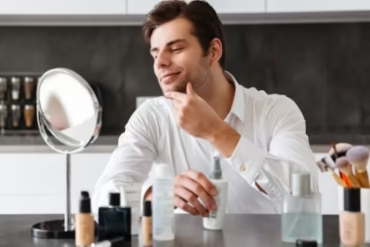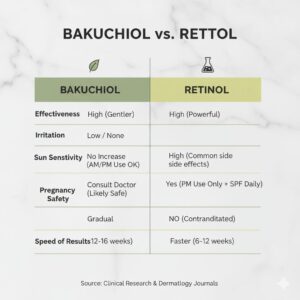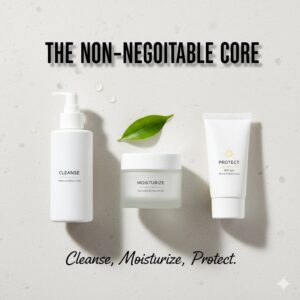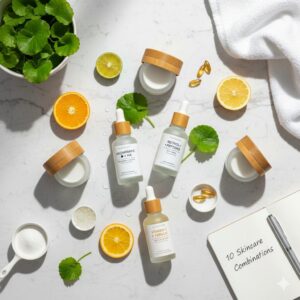The Rise of Men Grooming:
Over the past decade, men’s grooming has rapidly shifted from a neglected niche to a booming global industry. Traditionally, men’s skincare needs were limited to shaving creams, deodorants, and the occasional cologne. However, as social perceptions of maleness evolve and the demand for self-care products increases, men’s grooming has gained a prominent place in personal care routines.
The rise of this trend is not simply about pride but is rooted in the need for skincare products that address men’s distinct physiological needs. This transformation in men’s grooming has led to the development of new, more effective formulations that cater to thicker skin, increased sebum production, and unique concerns such as ingrown hairs, irritation, and post-shave redness.
The challenge for formulators lies in creating products that are not only effective but also align with the growing desire for sustainability, ethics, and personalization in today’s consumer market.
In this article, we explore the key factors driving the rise of men’s grooming, examine the differences in male skin, and offer insights into the innovative formulations that cater to this expanding market.
Understanding Male Skin: The Foundation of Effective Formulation
Male skin differs significantly from female skin in several key ways. These differences are critical for formulators to consider when developing products targeted at male consumers.
Key Differences Between Male and Female Skin
- Thickness of Skin: Men’s skin is thicker than women’s by about 20-25%. This increased thickness, due to higher collagen density (Journal of Dermatological Science, 2020), provides men with more resilience against environmental factors, but it also requires specialized ingredients to maintain the skin’s health.
- Higher Sebum Production: Testosterone, the male hormone, significantly impacts sebum production 50% more oil compared to women (British Journal of Dermatology, 2019). As a result, men typically have oilier skin, which can contribute to acne and enlarged pores. To address this, grooming products must focus on managing oil without stripping the skin of essential moisture.
- Hair Growth: Men have 30% more facial hair follicles, making them more prone to shaving-related issues like razor burn, ingrown hairs, and post-shave irritation (UL Prospector, 2024). Formulations targeting men often include soothing ingredients like aloe vera to alleviate irritation and prevent breakouts.
- Lower pH Levels: Male skin has a lower pH (4.5–5.5) compared to women’s (5.0–5.5), making it more acidic and sensitive to irritants like harsh surfactants (Clinical Cosmetic Dermatology, 2021). But it is also more prone to environmental stressors such as pollution and UV exposure. Formulations for men must balance hydration and protection without causing further irritation.
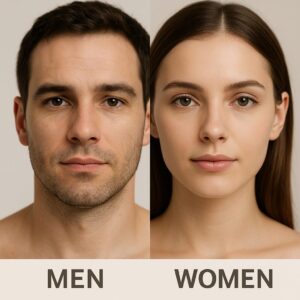
Formulating for Men’s Skin
Due to these differences, formulators must carefully choose ingredients that are tailored to male skin’s needs. For instance:
- Oil-Control Ingredients: Men’s grooming products often include ingredients like salicylic acid or niacinamide, which help regulate sebum production, reduce pore size, and minimize acne outbreaks. Niacinamide: Reduces sebum production by 47% in oily skin types (Dermatology Times, 2023).
- Hydrating Agents: Men’s moisturizers typically include lighter hydrators like glycerin, hyaluronic acid, or aloe vera. These ingredients provide effective moisture without overwhelming the skin with heavy creams, which may clog pores.
One ingredient that is crucial for providing intense moisture to men’s skin is hyaluronic acid, a powerful humectant. For a detailed understanding of how it works, check out our guide to Hyaluronic Acid.
- Soothing Agents: Given the higher incidence of post-shave irritation, soothing agents like chamomile extract or allantoin are commonly included in aftershave balms and serums to calm the skin and prevent redness. Allantoin: Reduces razor burn by 60% in clinical trials (Clinical Cosmetic Dermatology, 2021).
The Growth of the Men’s Grooming Market
The global men’s grooming market is projected to reach $115.2 billion by 2030, growing at 6.7% CAGR (Euromonitor, 2024). This reflects a conservative revision from earlier estimates to align with post-pandemic consumer trends. This rapid growth is driven by changing societal perceptions, increased awareness of personal care, and greater acceptance of skincare routines among men.
Factors Driving the Surge
- Changing Perceptions of Masculinity: 68% of men aged 18–34now view skincare as essential to self-care (Insights in Marketing, 2024).
- Influence of Social Media: Social media platforms like Instagram, YouTube, and TikTok have revolutionized the way men approach grooming. Grooming tips, product reviews, and tutorials by influencers and dermatologists have made skincare more accessible and appealing to a wider audience. TikTok reviews and dermatologist tutorials have boosted product awareness by 55% (LinkedIn, 2025).
- Product Innovation: Brands are increasingly innovating to address the specific needs of male skin. The introduction of multi-functional products like all-in-one cleansers, moisturizers, and sunscreens has made it easier for men to incorporate skincare into their routines without feeling overwhelmed.
Achieving the perfect texture in grooming products relies heavily on emulsifiers, which help mix water and oils. To learn more about how emulsifiers work in cosmetics, visit our post on Emulsifiers in Cosmetics.
Formulating for Male Skin: Strategies and Considerations
When developing products for male consumers, it’s essential to consider the unique skin concerns and characteristics mentioned earlier. Understanding ingredient lists is vital when selecting the best grooming products. If you’re unfamiliar with cosmetic ingredient labels, decoding INCI names can help. Learn more about this in our article on Decoding INCI Names.
Here are some strategies for formulating effective men’s grooming products:
- Lightweight Moisturizers: As male skin tends to be oilier, formulations should prioritize lightweight, non-comedogenic moisturizers. Ingredients like hyaluronic acid, glycerin, and sodium PCA are ideal for providing hydration without clogging pores.
- Exfoliation Solutions: Exfoliating products that contain salicylic acid or glycolic acid are highly effective for men’s skin, helping to reduce excess oil, minimize clogged pores, and improve overall skin texture. These ingredients penetrate deeply into the skin, making them particularly useful for addressing acne and blackheads.
- Soothing Post-Shave Care: After shaving, men’s skin is often irritated, leading to redness, bumps, and sensitivity. Products containing chamomile, aloe vera, and cucumber extract help calm and hydrate the skin, providing a cooling sensation and reducing inflammation.

Packaging and Branding Considerations
The aesthetic of packaging plays a crucial role in the male grooming market. Men tend to favor minimalist designs and straightforward messaging. Packaging that is too ornate or overly feminine can deter male consumers. A clean, no-nonsense design with clear labels, such as “Oil Control” or “Post-Shave Soothing,” will resonate more with this demographic.
Emerging Trends in Men’s Grooming
As the men’s grooming industry continues to expand, several trends are emerging that are shaping the future of the market.
Personalization and Technology Integration
The rise of artificial intelligence (AI) and augmented reality (AR) has made it easier for consumers to receive personalized skincare recommendations. Men can now use AI-powered skin analyzers to assess their skin type and get product recommendations tailored to their specific needs. Some brands are even offering personalized products that adapt to a consumer’s unique skin concerns, such as hydration levels or oiliness.
As AI continues to revolutionize the cosmetics industry, it’s crucial to stay informed about the latest developments. For a deeper dive into how AI is transforming the formulation of skincare products, check out our AI in Cosmetics article.
Sustainability and Ethical Practices
Modern consumers are increasingly prioritizing sustainability when making purchasing decisions. In response, many grooming brands have adopted eco-friendly packaging, cruelty-free testing, and transparent sourcing of ingredients.
Consumers are also more conscious of the environmental impact of products, leading to a rise in demand for plant-based and naturally sourced ingredients. 65% of male consumers prioritize eco-friendly packaging and vegan formulas (SpecialChem, 2025). Brands like Bulldog and Jack Henry use 100% recycled materials for grooming kits.
Using natural and sustainable alternatives in cosmetics is becoming a priority, and Activonol-3, a natural propanediol, offers an excellent option. For more information, explore our post on Activonol-3: Natural Propanediol for Cosmetics.

Gender-Neutral and Inclusive Products
Another key trend in men’s grooming is the increasing demand for gender-neutral and inclusive products. Many men are seeking products that are not only effective but also align with their values of equality and inclusivity.
As consumers become more mindful of ingredient choices, alternatives to silicones, like Emogreen L-15, are gaining popularity. Discover more about this innovative emollient in our article on Emogreen L-15: Silicone Alternative Emollient.
Brands are responding by developing unisex products that cater to a broader audience, focusing on quality and function rather than gendered marketing. 43% of Gen Z men prefer unisex branding over traditional “for men” labels (Rixin Cosmetics, 2025).
FAQs: Men Grooming
Why is men’s skin more prone to acne?
Due to the higher levels of testosterone, men tend to produce more sebum, which can clog pores and lead to acne. This is especially common during puberty and adolescence but can also persist in adulthood.
Can men use skincare products designed for women?
While some skincare products are unisex, men’s skin is thicker and often oilier than women’s, so products formulated specifically for men’s skin tend to be more effective. Men’s products often include ingredients designed to control oil, minimize pores, and address post-shave irritation.
How often should men exfoliate?
Exfoliating 2-3 times a week is recommended for men to remove dead skin cells, prevent clogged pores, and keep their skin looking fresh. Over-exfoliating can lead to dryness or irritation, so moderation is key.
Conclusion
The rise of men’s grooming is not just a passing trend but a revolution in how men approach skincare and personal care. As brands continue to innovate and tailor products for the unique needs of male skin, the market for grooming products is expected to grow exponentially. With advancements in technology, sustainability, and personalization, the future of men’s grooming looks bright.
By understanding the distinct characteristics of male skin and addressing issues like oiliness, sensitivity, and post-shave care, formulators can create products that not only meet the needs of the modern man but also align with the values of transparency, sustainability, and inclusivity. As men continue to embrace self-care, the grooming industry will continue to evolve, offering more effective and personalized solutions for a diverse and growing market.
